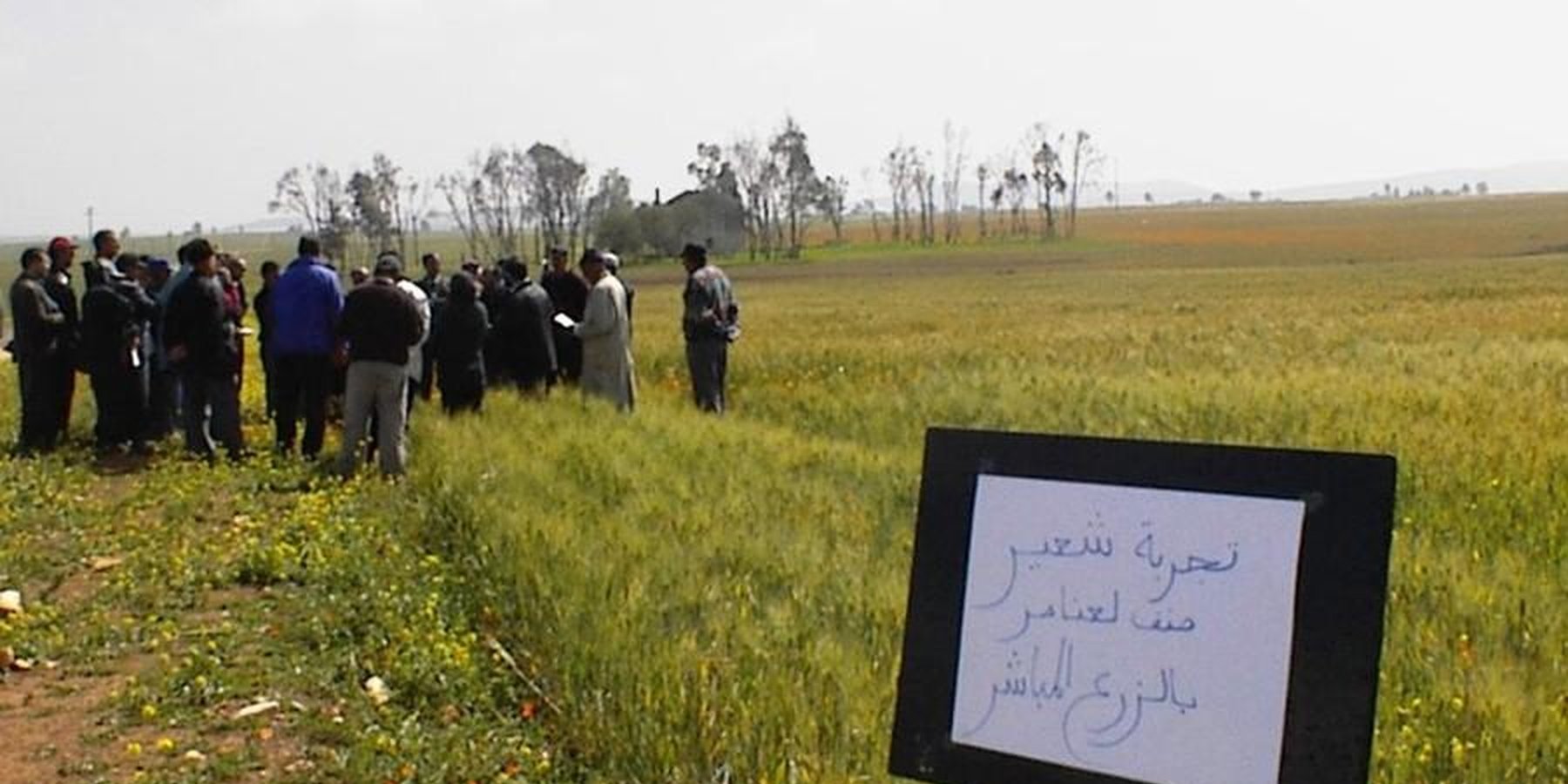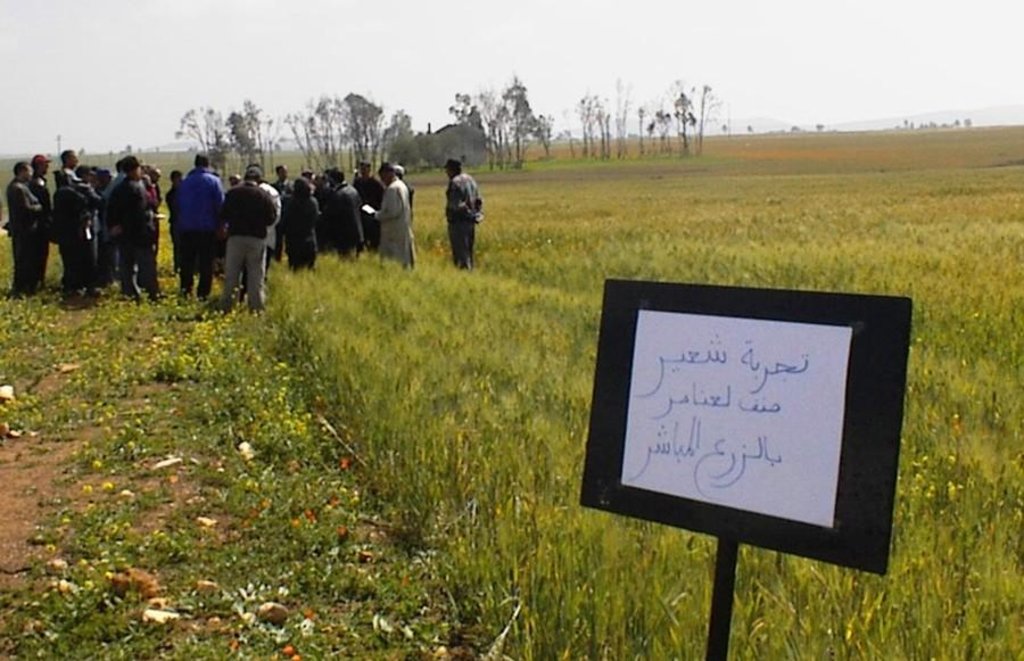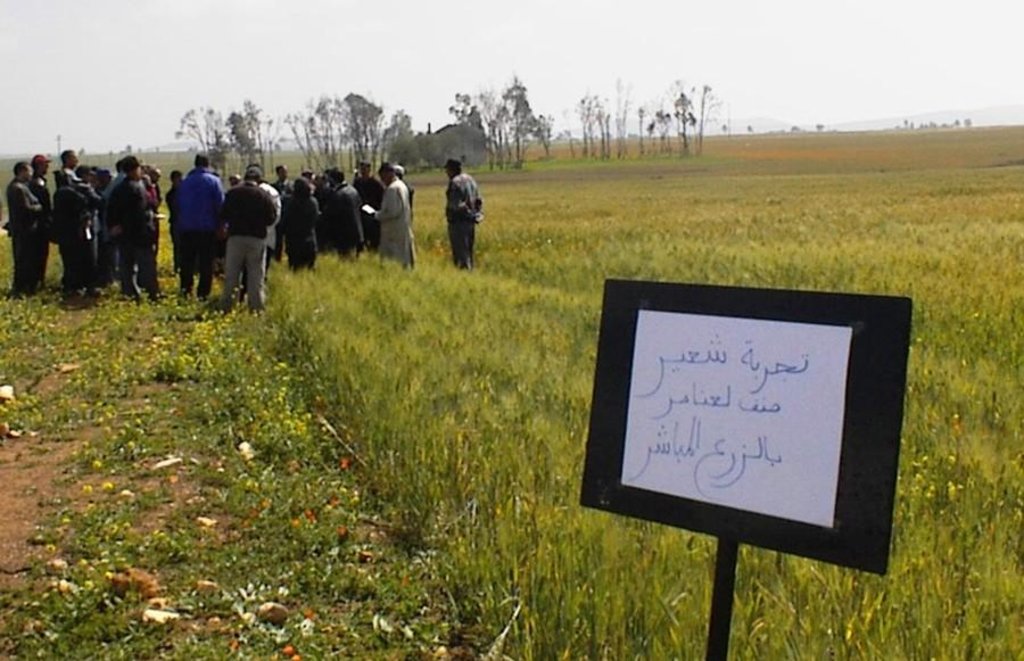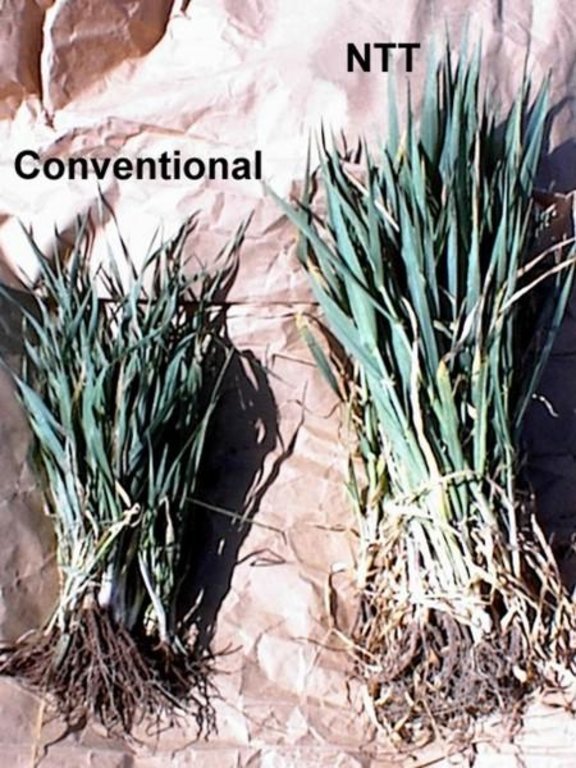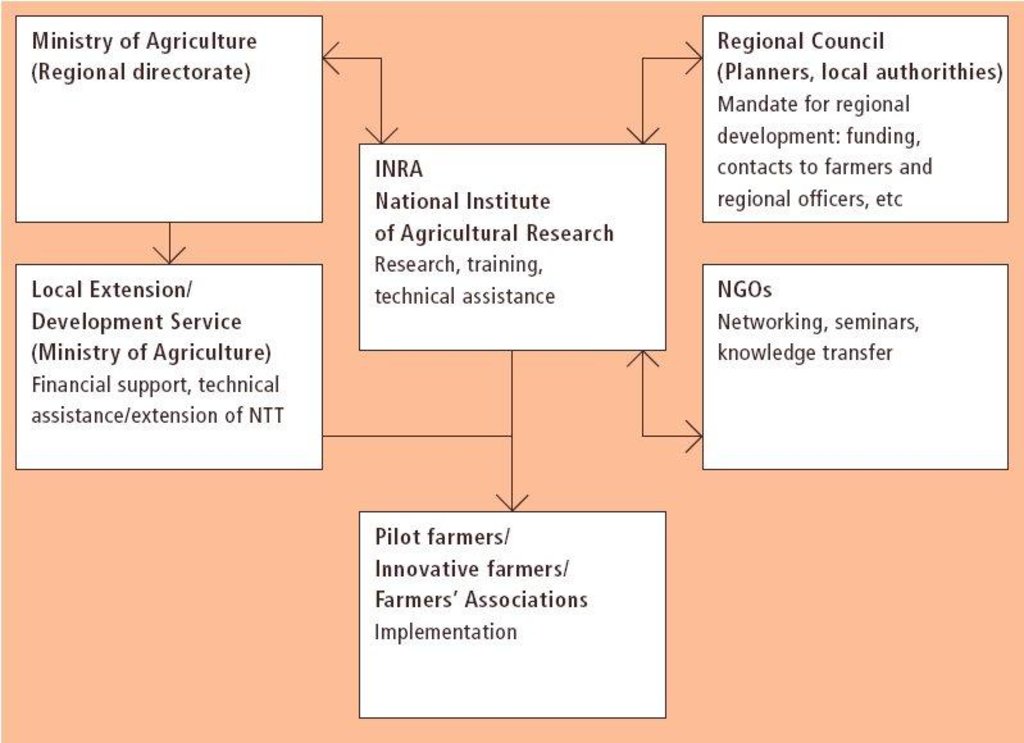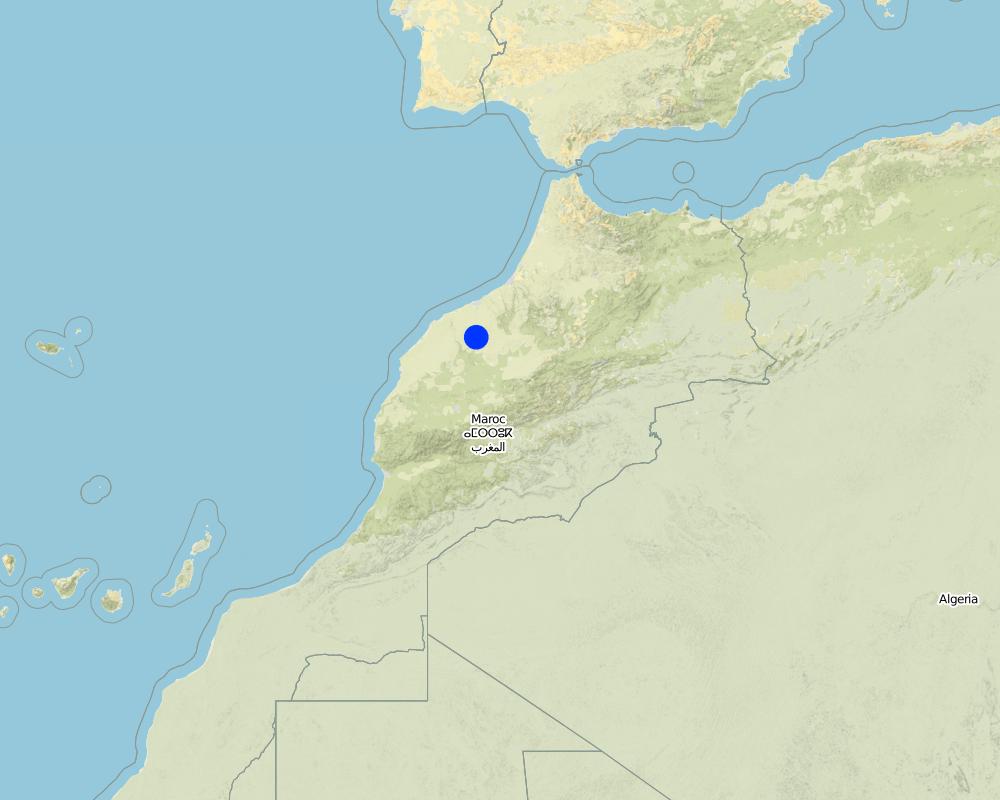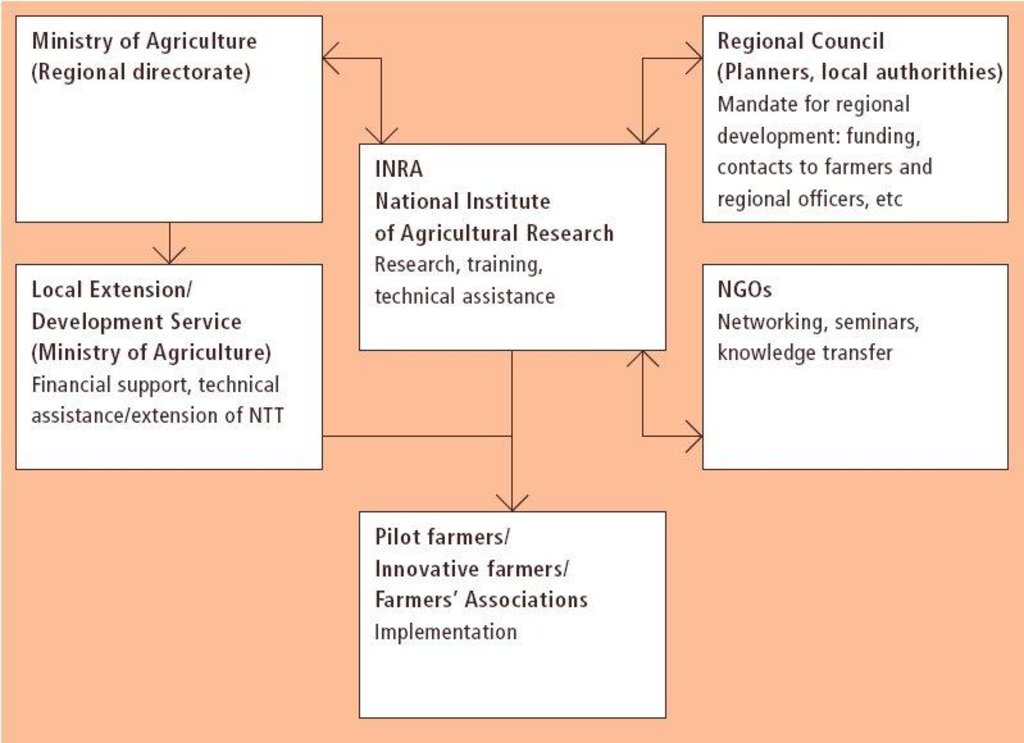Applied research and knowledge transfer [โมร็อกโก]
- ผู้สร้างสรรค์:
- การอัพเดท:
- ผู้รวบรวม: Rachid Mrabet
- ผู้เรียบเรียง: –
- ผู้ตรวจสอบ: David Streiff, Alexandra Gavilano, Deborah Niggli
approaches_2355 - โมร็อกโก
ดูส่วนย่อย
ขยายทั้งหมด ย่อทั้งหมด1. ข้อมูลทั่วไป
1.2 รายละเอียดที่ติดต่อได้ของผู้รวบรวมและองค์กรที่เกี่ยวข้องในการประเมินและการจัดเตรียมทำเอกสารของแนวทาง
ชื่อของโครงการซึ่งอำนวยความสะดวกในการทำเอกสารหรือการประเมินแนวทาง (ถ้าเกี่ยวข้อง)
Book project: where the land is greener - Case Studies and Analysis of Soil and Water Conservation Initiatives Worldwide (where the land is greener)ชื่อของโครงการซึ่งอำนวยความสะดวกในการทำเอกสารหรือการประเมินแนวทาง (ถ้าเกี่ยวข้อง)
Institut National de la Recherche Agronomique Morocco (INRA-Morocco) - โมร็อกโก1.3 เงื่อนไขที่เกี่ยวข้องกับการใช้ข้อมูลที่ได้บันทึกไว้ผ่านทาง WOCAT
ผู้รวบรวมและวิทยากรหลักยอมรับเงื่อนไขเกี่ยวกับการใช้ข้อมูลที่ถูกบันทึกผ่านทาง WOCAT:
ใช่
1.4 การอ้างอิงถึงแบบสอบถามเรื่องเทคโนโลยี SLM
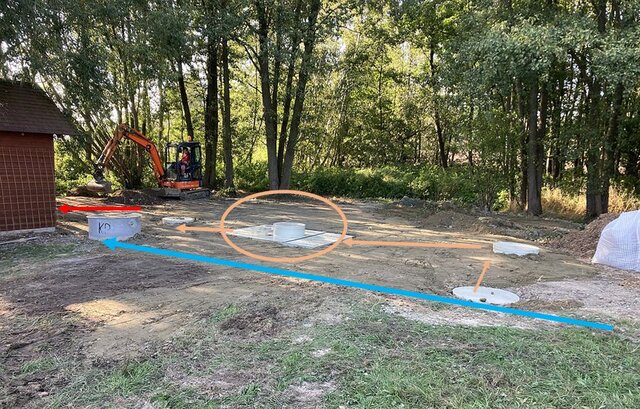
Drainage Biofilter [สาธารณรัฐเช็ก]
Biofilters or “bioreactors” connected to agricultural tile drains are relatively inexpensive and space-saving measures with considerable potential to improve the quality of drainage water.
- ผู้รวบรวม: Antonín Zajíček
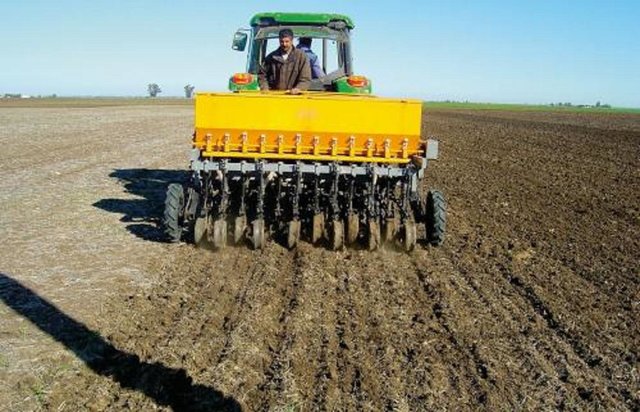
Технология нулевой обработки почвы [โมร็อกโก]
Система нулевой обработки почвы с использованием растительных остатков для среднемасштабного производства пшеницы и ячменя
- ผู้รวบรวม: Rachid Mrabet
2. คำอธิบายของแนวทาง SLM
2.1 การอธิบายแบบสั้น ๆ ของแนวทาง
Innovative, cross-disciplinary community-based approach for development and transfer of no-till technology at the farm level.
2.2 การอธิบายอย่างละเอียดของแนวทาง
การอธิบายอย่างละเอียดของแนวทาง:
Aims / objectives: After 15 years of on-station research at the National Institute of Agricultural Research (INRA), testing and evaluation of no-till technology (NTT) at farm level started in 1997 with three pilot farmers. Recently two new projects were established to promote the introduction and adoption of NTT, in collaboration with the regional council and extension service of the Ministry of Agriculture (MoA). Fourteen pilot farmers are now involved in NTT. The overall purpose is to promote no-till technology to restore soils, improve production, mitigate drought, increase wealth and strengthen farmers??? organisations. NTT has been shown to be socially, economically and ecologically adapted to the local conditions. The approach has three stages: (1) Initiation: this includes basic research, strategic research and applied research; (2) Consolidation: planning is followed by detailed evaluation of technology adoption on farmers' fields; (3) Maturity: this involves the acceptance/spread of NTT with an increased number of farmers in the future.
Methods: INRA carries out research, information dissemination, gives training to technicians and farmers, and provides both technical assistance and monitoring. The regional council was convinced by the technology and now financially supports research activities, drill manufacture and extension of NTT. It also facilitates contacts with decision makers and farmers, and carries out evaluations. MoA development and extension services provide financial support, advice, technical assistance, and logistical support to farmers: they help to make the drills available. NGOs are engaged in the development of local/regional networks and farmers associations, as well as in funding and providing incentives. Farmers themselves are involved in the implementation, evaluation and dissemination of NTT. Participation, cross-discipline and bottom-up planning are key elements of the approach. Methods for implementation include long-term community on-farm trials, on-site training and information exchange, participation of stakeholders, information dissemination tools, and multi-directional knowledge flow. These are supplemented by intensive measurement/monitoring schemes, establishment of local/regional networks and farmers' association creation. On-the-job training is also provided.
2.3 รูปภาพของแนวทาง
2.5 ประเทศ ภูมิภาค หรือสถานที่ตั้งที่ได้นำแนวทางไปใช้
ประเทศ:
โมร็อกโก
ภูมิภาค/รัฐ/จังหวัด: :
Chaouia/Ouardigha
Map
×2.6 วันที่เริ่มต้นและสิ้นสุดของแนวทาง
ระบุปีที่เริ่ม:
1997
ความคิดเห็น:
The approach is now under application in this region but it is expected to apply in other regions of Morocco if funds are available
2.7 ประเภทของแนวทาง
- ใช้โครงงานหรือแผนงานเป็นฐาน
2.8 เป้าหมายหรือวัตถุประสงค์หลักของแนวทาง
The Approach focused mainly on SLM with other activities
- spread the no-till technology: thereby enhancing soil productivity and reducing susceptibility to land degradation. - develop the production of no-till drill machinery. - generally: to ameliorate the living conditions of rural people through enhancing expertise, capacities and knowledge of farmers in managing their soils and crops
The SLM Approach addressed the following problems: - previous absence of an integrated research and extension programme. - lack of technical options in a harsh and risky environment. - underlying problems of land degradation and drought periods
2.9 เงื่อนไขที่เอื้ออำนวยหรือเป็นอุปสรรคต่อการนำเทคโนโลยีภายใต้แนวทางนี้ไปปฏิบัติใช้
บรรทัดฐานและค่านิยมทางสังคม วัฒนธรรม ศาสนา
- เป็นอุปสรรค
Over-reliance on traditions in soil management; attitudes of farmers towards conventional tillage need challenging through information about alternatives.
Treatment through the SLM Approach: Training, video conferences, travelling workshops, etc.
การมีไว้ให้หรือการเข้าถึงแหล่งการเงินและบริการ
- เป็นอุปสรรค
Lack of specific funds, credit, loans for investment in new machinery
Treatment through the SLM Approach: Prioritise funds for no-tillage development
การจัดตั้งระดับองค์กร
- เป็นอุปสรรค
Extension service are not well incorporated in the approach due to lack of knowledge/information on no-tillage
Treatment through the SLM Approach: Special Training program; change of institutional thinking upon no-tillage systems
กรอบแนวทางในการดำเนินการด้านกฎหมาย (การถือครองที่ดิน สิทธิในการใช้ที่ดินและน้ำ)
- เป็นอุปสรรค
lack of SWC-relatedl laws
Treatment through the SLM Approach: Recommendations on laws to cover SWC technologies.
The existing land ownership, land use rights / water rights moderately hindered the approach implementation small size of field requires integration of farmers for using no-till drill and other equipment
ความรู้เกี่ยวกับ SLM การเข้าถึงการสนับสนุนด้านเทคนิค
- เป็นอุปสรรค
Lack of adapted machinery
Treatment through the SLM Approach: Promotion of no-till drill industry in Morocco
3. การมีส่วนร่วมและบทบาทของผู้มีส่วนได้ส่วนเสียที่เกี่ยวข้อง
3.1 ผู้มีส่วนได้ส่วนเสียที่เกี่ยวข้องในแนวทางนี้และบทบาท
- ผู้ใช้ที่ดินระดับท้องถิ่นหรือชุมชนระดับท้องถิ่น
- องค์กรที่ขึ้นอยู่กับชุมชน
Existing groups of land users
- ผู้เชี่ยวชาญ SLM หรือที่ปรึกษาการเกษตร
- รัฐบาลแห่งชาติ (ผู้วางแผน ผู้ทำการตัดสินใจ)
INRA
3.2 การเกี่ยวข้องของผู้ใช้ที่ดินระดับท้องถิ่นหรือชุมชนระดับท้องถิ่นในช่วงต่างๆของแนวทาง
| ความเกี่ยวข้องของผู้ใช้ที่ดินระดับท้องถิ่นหรือชุมชนระดับท้องถิ่น | ระบุผู้ที่มีส่วนเกี่ยวข้องและอธิบายกิจกรรม | |
|---|---|---|
| การริเริ่มหรือการจูงใจ | ไม่ลงมือ | Mainly:public meetings; partly: workshops/seminars; open days |
| การวางแผน | จ่ายเงินหรือสนับสนุนจากภายนอก | Mainly: workshops/seminars; partly: public meetings |
| การดำเนินการ | จ่ายเงินหรือสนับสนุนจากภายนอก | Mainly: responsibility for minor steps; partly: casual labour |
| การติดตามตรวจสอบหรือการประเมินผล | จ่ายเงินหรือสนับสนุนจากภายนอก | Mainly: interviews/questionnaires; partly: measurements/observations; field observations |
| Research | ปฏิสัมพันธ์ | on-farm; demonstration plots |
3.3 แผนผังแสดงขั้นตอนการทำงาน (ถ้ามี)
คำอธิบาย:
Institutional framework: Stakeholders and their roles: cross-disciplinary linkages between INRA, collaborating institutions and farmers.
3.4 การตัดสินใจเลือกใช้เทคโนโลยี SLM
ระบุผู้ที่ทำการตัดสินใจเลือกเทคโนโลยีมากกว่าหนึ่งวิธีไปปฏิบัติใช้:
- ผู้เชี่ยวชาญ SLM เป็นผู้ตัดสินใจหลัก ที่ติดตามให้คำปรึกษากับผู้ใช้ที่ดิน
การอธิบาย:
Recognition of no-tillage as a pertinent technology by decision-makers at local, regional or national level (specialists and politicians / leaders) is due to important station results as well as to international call for promoting this technology
Decisions on the method of implementing the SLM Technology were made by mainly by SLM specialists with consultation of land users. No-tillage technology was under research and on farm trials (3 farmers) and showed very marked benefits, particularly during droughty years
4. การสนับสนุนด้านเทคนิค การสร้างขีดความสามารถ และการจัดการด้านความรู้
4.1 การสร้างขีดความสามารถ / การอบรม
ได้มีการจัดอบรมให้แก่ผู้ใช้ที่ดินหรือผู้มีส่วนได้ส่วนเสียคนอื่น ๆ หรือไม่:
ใช่
ให้ระบุว่าใครเป็นผู้ได้รับการอบรม:
- ผู้ใช้ที่ดิน
- extensionists/trainers, politicians/decision makers, planners
รูปแบบการอบรม:
- กำลังดำเนินการ
- ใช้พื้นที่ทำการสาธิต
- จัดการประชุมสู่สาธารณชน
หัวข้อที่พูด:
no-tillage system, weed control, machinery, cropping systems, crop variety
4.2 การบริการให้คำแนะนำ
ผู้ใช้ที่ดินมีการเข้าถึงการรับบริการให้คำปรึกษาหรือไม่:
ใช่
ระบุว่ามีบริการให้คำปรึกษาหรือไม่:
- ไปเยี่ยมชมสถานที่
การอธิบาย/แสดงความคิดเห็น:
Key elements: Participation of extension agents and farmers / observations (on the crop, weeds, disease, seeding condition, yield components), On-job training / open days (field days to make farmers and extension discuss questions / remarks regarding no till technology, Monitoring/Participatory; 1) Advisory service was carried out through: government's existing extension system 2) Advisory service was carried out through: government's existing extension system; Extension staff: mainly government employees 3) Target groups for extension: land users; Activities: demonstration, field days, traveling workshops
Advisory service is inadequate to ensure the continuation of land conservation activities; Extension Agents need training
4.3 การเสริมความแข็งแกร่งให้กับสถาบัน (การพัฒนาองค์กร)
สถาบันได้รับการจัดตั้งขึ้นมาหรือเสริมความแข็งแกร่งโดยแนวทางนี้หรือไม่:
- ใช่ ปานกลาง
ระบุระดับของสถาบันที่ได้รับการเสริมความแข็งแกร่งหรือจัดตั้งขึ้นมา:
- ท้องถิ่น
ระบุประเภทของการให้ความช่วยเหลือสนับสนุน:
- ด้านการเงิน
- การสร้างขีดความสามารถ / การอบรม
4.4 การติดตามตรวจสอบและประเมินผล
การติดตามตรวจสอบและประเมินผลเป็นส่วนหนึ่งของแนวทางหรือไม่:
ใช่
ความคิดเห็น:
Bio-physical aspects were regular monitored by 0 through measurements
Technical aspects were regular monitored by 0 through measurements
Socio-cultural aspects were ad hoc monitored by 0 through observations
Economic / production aspects were regular monitored by 0 through measurements;
Area treated aspects were ad hoc monitored by 0 through observations
No. of land users involved aspects were regular monitored by 0 through measurements
Management of Approach aspects were ad hoc monitored by 0 through observations;
There were no changes in the Approach as a result of monitoring and evaluation: The evaluation is still in process: thus too early to state what changes are likely.
4.5 การวิจัย
การวิจัยเป็นส่วนหนึ่งของแนวทางหรือไม่:
ใช่
ระบุหัวข้อเรื่อง:
- สังคมวิทยา
- เทคโนโลยี
- agronomy
ให้ข้อมูลเพิ่มเติมและให้ระบุผู้ทำการวิจัย:
crop performance, soil analysis, no-till drill design and evaluation, socio-economic indexes of NTT.
Research was carried out both on station and on-farm
5. การสนับสนุนด้านการเงินและวัสดุอุปกรณ์
5.1 ระบุงบประมาณประจำปีสำหรับแนวทาง SLM นี้
ถ้าหากว่างบประมาณประจำปีไม่เป็นที่ทราบแน่นอน ให้ระบุช่วงลงไป:
- 10,000-100,000
แสดงความคิดเห็น (แหล่งของการระดมทุน ผู้บริจาคคนสำคัญ):
Approach costs were met by the following donors: government (national - INRA/Ministry): 80.0%; local community / land user(s) (Regional Council): 20.0%
5.2 การสนับสนุนด้านการเงิน / วัสดุอุปกรณ์ให้แก่ผู้ใช้ที่ดิน
ผู้ใช้ที่ดินได้รับการสนับสนุนด้านการเงิน / วัสดุอุปกรณ์ไปปฏิบัติใช้เทคโนโลยีหรือไม่:
ใช่
5.3 เงินสนับสนุนสำหรับปัจจัยนำเข้า (รวมถึงแรงงาน)
- อุปกรณ์
| ระบุปัจจัยนำเข้าที่ได้รับการสนับสนุน | เห็นด้วยระดับไหน | ระบุเงินสนับสนุน |
|---|---|---|
| เครื่องจักร | ได้รับการช่วยเหลือทางการเงินแบบเต็ม | |
- การเกษตร
| ระบุปัจจัยนำเข้าที่ได้รับการสนับสนุน | เห็นด้วยระดับไหน | ระบุเงินสนับสนุน |
|---|---|---|
| ได้รับการช่วยเหลือทางการเงินแบบเต็ม | ||
| ได้รับการช่วยเหลือทางการเงินแบบเต็ม | ||
| biocides | ได้รับการช่วยเหลือทางการเงินแบบเต็ม | |
ถ้าแรงงานโดยผู้ใช้ที่ดินเป็นปัจจัยนำเข้าที่มีอยู่มากมาย ระบุด้วยว่าเนื่องจาก:
- สมัครใจ
5.4 เครดิต
มีการจัดหาเครดิตมาให้ภายใต้แนวทาง SLM หรือไม่:
ใช่
ถ้าใช่ ระบุเงื่อนไข (อัตราดอกเบี้ย การชำระคืน):
repayment conditions: To promote the acceptance of the technology, farmers receive a 50% subsidy on the purchase price of the no-till drill (as is the general case for all types of drills)..
6. การวิเคราะห์ผลกระทบและการสรุป
6.1 ผลกระทบของแนวทาง
ช่วยให้ผู้ใช้ที่ดินนำเอาเทคโนโลยี SLMไปใช้และบำรุงรักษาสภาพไว้ได้หรือไม่:
- ไม่ใช่
- ใช่ เล็กน้อย
- ใช่ ปานกลาง
- ใช่ อย่างมาก
Better use of the rainwater stored in the soil by crops leads to improvement of soil and water management: increase in soil organic matter has multiple benefits.
ปรับปรุงประเด็นของการถือครองที่ดินหรือสิทธิในการใช้ ซึ่งขัดขวางการนำเทคโนโลยีไปใช้ให้ดีขึ้น:
- ไม่ใช่
- ใช่ เล็กน้อย
- ใช่ ปานกลาง
- ใช่ อย่างมาก
The land is a private property and can not be affected by no-tillage but with no-tillage farmers can rent or buy new lands for adoption of more no-tillage.
Did other land users / projects adopt the Approach?
- ไม่ใช่
- ใช่ เล็กน้อย
- ใช่ ปานกลาง
- ใช่ อย่างมาก
This no-till system can now be considered for several different agroecological situations where a similar approach can be applied (e.g. flood control project, agro-forestry program, soil restoration project, etc.).
6.3 ความยั่งยืนของกิจกรรมของแนวทาง
ผู้ใช้ที่ดินสามารถทำให้สิ่งต่างๆ ที่ได้ปฏิบัติใช้โดยแนวทางนี้ยั่งยืนได้หรือไม่ (โดยไม่มีการสนับสนุนจากภายนอก):
- ใช่
ถ้าตอบว่าใช่ ให้อธิบายว่าอย่างไร :
Progress can continue to be made, assuming that training, subsidised drills, and the creation of farmers' organisations all persist.
6.4 จุดแข็งและข้อได้เปรียบของแนวทาง
| จุดแข็ง / ข้อได้เปรียบของแนวทางในทัศนคติของผู้ใช้ที่ดิน |
|---|
| Adaptability to farmers needs/constraints (How to sustain/ enhance this strength: Include integration of livestock and crops. This should be helpful to pursue in the approach) |
| Farmer's decisions, opinions, critics (How to sustain/ enhance this strength: Bottom-up maintained (gradually)) |
| Incentives make it possible for land users to experiment with a new cultivation system (How to sustain/ enhance this strength: Diversification of incentives: eg reduction in seed prices and herbicides for NTT farmers; award - NTT best producers; reduction in interest rates for NTT farmers (for credits or loans); special NTT training courses.) |
| จุดแข็ง / ข้อได้เปรียบของแนวทางในทัศนคติของผู้รวบรวมหรือวิทยากรหลัก |
|---|
| The NTT project has integrated several institutions -which is unique in Morocco. Now research, extension, community and farmers are working together towards the same objective (How to sustain/ enhance this strength: Further develop, refine and spread NTT) |
| NGOs development: the association of NTT farmers and environmental clubs are important for spreading NTT and for re-enforcing the importance of NTT amongst government officers and decision makers (How to sustain/ enhance this strength: special NGOs should be encouraged to respect soils, nature, environment) |
| Cross-discipline: involving land users, research and extension agents has helped in building up an approach suitable for the local conditions. (How to sustain/ enhance this strength: The working teams received also incentives and recognictions) |
| research connected to extension (How to sustain/ enhance this strength: research should be developed to get continuous measurements/information and to search new indexes and means) |
| Progressive implementation of a 'bottom-up' approach; integration of farmers' decisions, opinions and criticisms (How to sustain/ enhance this strength: Farmers and their association are involved gradually in the approach and their critics, comments, feedbacks respected) |
6.5 จุดอ่อน / ข้อเสียเปรียบของแนวทางและวิธีในการแก้ไข
| จุดอ่อน / ข้อเสียเปรียบในทัศนคติของผู้ใช้ที่ดิน | สามารถแก้ไขปัญหาได้อย่างไร |
|---|---|
| Information availability: up to now information and communication on NTT is scarce | intensify training of trainees |
| In some situations (farmers with very low incomes), the need for external inputs such as herbicides, seeds, fertilizers and drills may retard implementation of NTT | Incentives should be maintained for a short period and supplemented by credit systems. |
| จุดอ่อน / ข้อเสียเปรียบในทัศนคติของผู้รวบรวมหรือวิทยากรหลัก | สามารถแก้ไขปัญหาได้อย่างไร |
|---|---|
| Direct incentives: there is always a risk that when eliminating these incentives, farmers will abandon NTT | Eliminate incentives gradually and replace with loans and credits. |
| The programme's duration is currently too short to overcome resistance (to new technology adoption) and to address economic constraints of farmers | A long term programme is needed to increase acceptance among farmers. |
7. การอ้างอิงและการเชื่อมต่อ
7.1 วิธีการหรือแหล่งข้อมูล
- ไปเยี่ยมชมภาคสนาม การสำรวจพื้นที่ภาคสนาม
- การสัมภาษณ์กับผู้ใช้ที่ดิน
7.2 การอ้างอิงถึงสิ่งตีพิมพ์
ชื่อเรื่อง ผู้เขียน ปี ISBN:
Wall et al, 2002, Institutional aspects of conservation agriculture, International workshop on conservation agriculture for sustainable wheat production, 14-18, october 2002, Tastikent, Usbekistan
ช่องทางในการสืบค้น และราคา:
p.wall@cgiar.org
ชื่อเรื่อง ผู้เขียน ปี ISBN:
Segry, L.; Bouzinac, S and Pieri, C. 1991: An Approach to the development of sustainable farming systems. World echnical papaer N-2, ISBRAM proceedings 1991
ลิงก์และโมดูล
ขยายทั้งหมด ย่อทั้งหมดลิงก์

Drainage Biofilter [สาธารณรัฐเช็ก]
Biofilters or “bioreactors” connected to agricultural tile drains are relatively inexpensive and space-saving measures with considerable potential to improve the quality of drainage water.
- ผู้รวบรวม: Antonín Zajíček

Технология нулевой обработки почвы [โมร็อกโก]
Система нулевой обработки почвы с использованием растительных остатков для среднемасштабного производства пшеницы и ячменя
- ผู้รวบรวม: Rachid Mrabet
โมดูล
ไม่มีโมดูล


